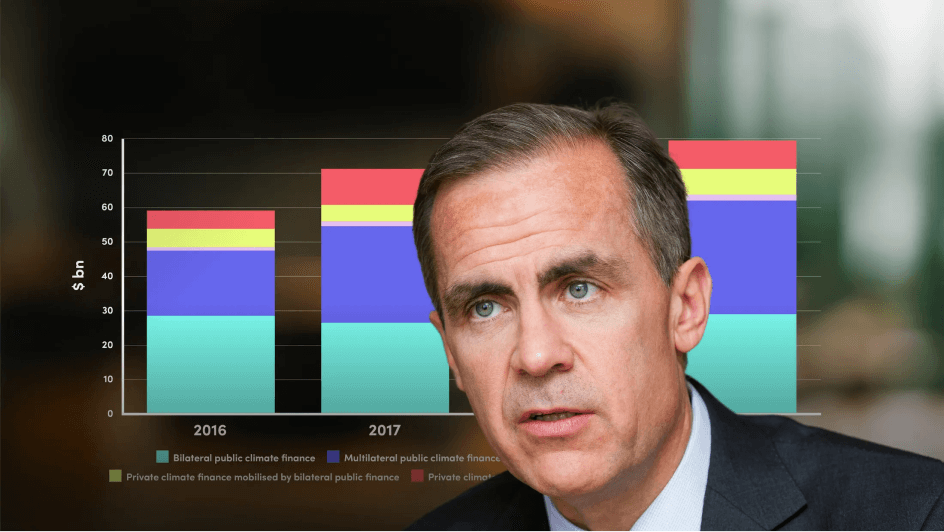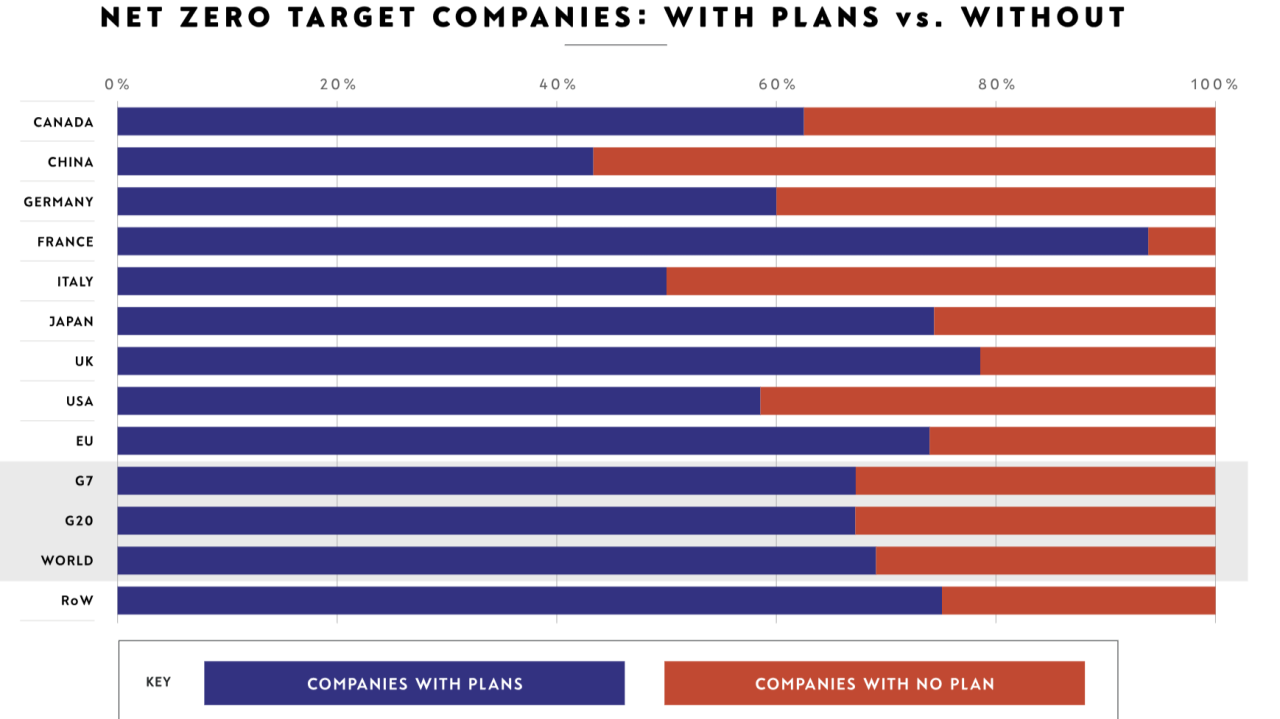
Lights in the fog: Positive signals for sustainability investment

Henry White
Co-founder and CEO of xUnlocked
How to respond to the powerful forces shaping sustainability investment

In these darkening political times, those of us driving sustainability could be forgiven for feeling under siege. Just last week, President Trump stood before the United Nations General Assembly and dismissed the green transition outright, calling climate change “the greatest con job ever perpetrated on the world”.
And yet, only a few blocks away, I was at Climate Week NYC. And it told a very different story. Yes, we are operating in a climate of political pushback, from the dismantling of the Net-Zero Banking Alliance to companies stepping back from earlier climate pledges. But the mood among global sustainability leaders was anything but defeatist.
- The conversations were buoyant, pragmatic, and focused on action. The tone had shifted from abstract ambition to necessity-driven innovation: when our backs are against the wall, we will find a way.
- It was striking that sustainability is no longer framed as an altruistic “side quest”. Now it is seen as intrinsic to competitiveness: faster, cheaper, more efficient, less wasteful, more productive. In other words, sustainability is smart business.
- And critically, this momentum is emerging with or without government and regulatory backing, driven instead by the sheer scale of commercial opportunity.
- The sense overall? We’re coming out of the trough of disillusionment into a dawn of real change.
This reality is reflected in the investment numbers. In the first half of 2025, global capital into new renewable energy projects reached $386 billion — a 10 percent increase over the same period in 2024. This counterintuitive tension — between political volatility and rising capital flows — presents a dilemma for all of us working hard to execute sustainability strategies. How long can this resilience last? And how can we continue to play our role in supporting the transformation?
To answer these questions, we need to consider three powerful forces now reshaping sustainability investment.
1. Capital is flowing, but with new rigour and direction
Here are the facts. The sustainable finance market continues to grow, surpassing $8.2 trillion in 2024 — up 17 percent from 2023 — with record issuance of green and sustainability-linked bonds over $1 trillion. The value of the sustainable fund market also reached a record high at $3.2 trillion, according to the multi-year investment plan of €58 billion (2025-2028) with roughly two-thirds targeted toward its regulated grid and network operations in the UK and US. This includes investments of €21 billion in renewables, such as offshore and onshore wind, solar PV and storage. By upgrading and expanding grids, such investment makes it possible for more renewable energy to connect, travel efficiently, and reach end-users, a critical foundation for successful decarbonisation.
Capital is no longer just chasing the shinier net-zero projects. It’s gravitating towards the plumbing of the energy transition: resilient networks, system enablers, governance frameworks.
For sustainability teams, this means evolving the playbook. Investors, clients and regulators are looking for proof of understanding and alignment with system-level realities — from grid capacity to supply-chain resilience — alongside thoughtful approaches to political risk, credible de-risking structures, and transparent impact measurement.
2. Regime change, regulatory drift and political backlash
If capital is moving, it’s doing so in a more volatile permitting, policy, and media environment — ie, a backdrop of increasing scrutiny, uncertainty, and pushback.
- In Europe, for example, the implementation of the Corporate Sustainability Reporting Directive (CSRD) and the Corporate Sustainability Due Diligence Directive (CSDDD) remains fluid. The EU adopted a “stop-the-clock” directive delaying CSRD rollouts for Waves 2 and 3 until 2028.
- Regulation around the Carbon Border Adjustment Mechanism (CBAM) is being negotiated aggressively, while the omnibus “simplification” package hints at tradeoffs between agility and accountability in ESG regulation.
- In the UK, ESG and green taxonomies have become political footballs, incubating anxiety inside corporates about navigating “greenwashing” risks, regulatory reversals, and reputational backlash.
- Simultaneously, climate litigation is growing. The Global Trends in Climate Change Litigation 2025 report shows more cases holding governments and companies to account — especially in Europe.
- Institutional investors, too, feel the pressure. In Robeco’s 2025 Global Climate Investing Survey, 56 percent of European investors still cite climate change as a significant factor in their investment policy. But this is slightly down from 58% in 2024 and 60% in 2023, suggesting incremental erosion of conviction in tougher times.
These conditions can generate paralysis. But they also signal maturity, into an era of robust standards, transparency, traceability, and internal capability, separating the fringe pledgers from credible movers.
The political winds may shift, but they won’t erase the fundamentals: energy security, cost advantage, stakeholder expectations, resilient supply chains, and long-term competitiveness. For sustainability teams, these are the anchors of strategy, the points around which investment strategies, client advisories, and risk frameworks must be built.

3. Embedding learning to build workforce capability
Capital chasing complexity, regulatory churn, political turbulence — all point to the same truth: sustainability investments only succeed when organisations have the capability to absorb them, adapt, and put them into practice.
Learning and capability-building aren’t peripheral; they are part of the infrastructure of transformation. They strengthen three areas that matter most:
- Risk mitigation: Too many projects falter not because the idea is flawed, but because teams lack the regulatory foresight, cross-functional alignment, or execution muscle to deliver. Educating leaders to anticipate policy shifts, run scenarios, and coordinate across finance, legal, and operations protects value and avoids costly missteps.
- Value capture and innovation: Organisations with sustainability fluency see opportunities others overlook — from financing circular economy assets to advising clients on carbon-linked products. With the right knowledge in place, sustainability shifts from being a compliance burden to a source of growth.
- Cultural resilience and retention: In financial and professional services, talent is the business. Building sustainability skills across teams attracts and keeps mission-driven people, while creating alignment from front to back office. That resilience is becoming a strategic edge.
When the next downturn, regulatory reset, or political reversal arrives — and it will — the firms with capability embedded across their workforce will adapt faster, protect their positions, and keep moving the transition forward.
What to watch and how to lean in
1. Look harder at emerging markets
Too much capital is still circling the same advanced economies. In 2024, 80% of clean energy spending went to developed markets and China. That leaves an enormous tail of opportunity, both financial and impact-driven, in emerging markets. For banks, asset managers, and advisors willing to tackle risk creatively, these are the markets that will define the next decade of sustainable growth.
2. Embrace modular and creative finance
The era of easy, utility-scale deals is fading. The edge now lies in structuring: blended finance, securitised renewables, energy-as-a-service, carbon-linked models. If you’re in banking or asset management, build the structuring muscle now. If you’re in professional services, sharpen your advisory here. The firms that move early will capture outsized returns and reputation.
3. Prove it, don’t just claim it
In a sceptical market, credibility is currency. Clients and regulators don’t just want promises; they want proof. That means rigorous data, verified metrics, and transparent narratives. For financial and advisory institutions, this isn’t just compliance, it’s competitive positioning. The firms that can show impact will lead.
4. Engage, don’t just react
Regulation and standards are being written in real time, so don’t sit on the sidelines. Engage with policymakers, standard-setters, and investor coalitions now. The firms shaping the conversation will also shape the markets. Those who wait to react will always be behind.
5. Treat capability as infrastructure
Learning is not a campaign; it’s the backbone of resilience. Scenario drills, cross-desk rotations, client-facing sustainability fluency — these should be embedded into your culture, not bolted on. The organisations that prioritise continuous learning will not just weather turbulence, they’ll turn it into advantage.
Onwards and upwards
The story of 2025 is not retreat — it is recalibration. Capital is still flowing; sustainable finance is expanding; system-level investments are becoming central; the regulatory and political landscape is pushing back, but not reversing. For those stewards — CSOs, sustainability leads, investor partners, professional advisors, and beyond — the mandate is clear: lean into capability, anchor in transparency, and lean forwards, not back.
Because in this moment of flux, every well-led sustainability investment is a bet not just on climate outcomes, but on the mettle of organisations and their capacity to evolve. And that’s the kind of shift worth unlocking.

Henry White
Share "Lights in the fog: Positive signals for sustainability investment" on
































